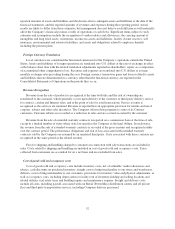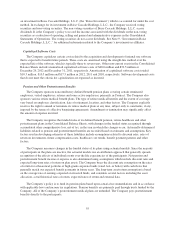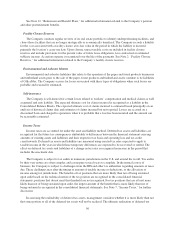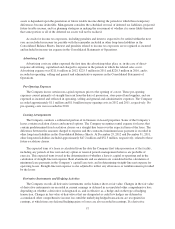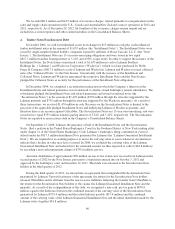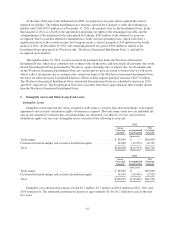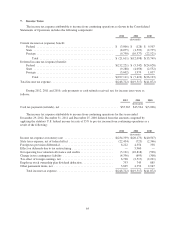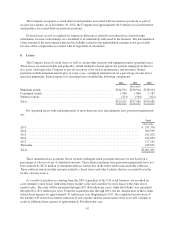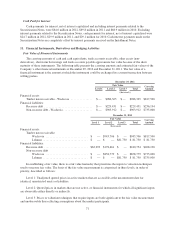OfficeMax 2012 Annual Report Download - page 98
Download and view the complete annual report
Please find page 98 of the 2012 OfficeMax annual report below. You can navigate through the pages in the report by either clicking on the pages listed below, or by using the keyword search tool below to find specific information within the annual report.
The changes in the intangible carrying amounts were as follows:
Trade names
Customer
lists/relationships
and exclusive
distribution rights Total
(thousands)
Net carrying amount, December 26, 2009........................ $66,000 $17,806 $83,806
Amortization .............................................. — (1,955) (1,955)
Effect of foreign currency translation ........................... — 1,380 1,380
Net carrying amount, December 25, 2010........................ $66,000 $17,231 $83,231
Amortization .............................................. — (1,686) (1,686)
Effect of foreign currency translation ........................... — (25) (25)
Net carrying amount, December 31, 2011........................ $66,000 $15,520 $81,520
Amortization .............................................. — (1,665) (1,665)
Effect of foreign currency translation ........................... — 910 910
Net carrying amount, December 29, 2012........................ $66,000 $14,765 $80,765
Our trade name assets are intangible assets with indefinite lives. They are not amortized, but are tested for
impairment at least annually or more frequently if events and circumstances indicate that the asset might be
impaired. Beginning in 2012, we may make a qualitative assessment to determine whether it is more likely than
not that an indefinite-lived intangible asset, other than goodwill, is impaired. If, after making the qualitative
assessment, we determine it is not more likely than not that the fair value of an indefinite-lived intangible asset is
less than its carrying amount, then performing a quantitative impairment test is unnecessary. If a quantitative
impairment test is performed, the asset’s fair value is estimated and compared to its carrying value. An
impairment loss is recognized to the extent that the carrying amount exceeds the asset’s fair value. At the end of
2012, 2011 2010, we performed quantitative impairment tests of our trade name assets and no impairment was
recorded as a result.
Other Long-Lived Assets
We are also required to test our long-lived assets for impairment whenever an indicator of potential
impairment exists. In 2012, 2011 and 2010, we noted the existence of indicators of potential impairment for the
assets of individual retail stores (“store assets” or “stores”), which consist primarily of leasehold improvements
and fixtures, and performed impairment testing for these assets. We performed the first step of impairment
testing for other long-lived assets on the store assets and determined that for some stores the estimated future
undiscounted cash flows derived from the assets was less than those assets’ carrying amounts and therefore
impairment existed for those store assets. We then performed the second step of impairment testing, which was
to calculate the amount of the impairment loss. The loss was measured as the excess of the carrying value over
the fair value of the assets, with the fair value determined based on estimated future discounted cash flows. As a
result of these tests, we impaired $11.4 million, $11.2 million and $11.0 million of store assets in 2012, 2011 and
2010, respectively.
62


